Association of Financial Conflicts of Interest With Academic Productivity Among Junior Faculty in Hematology and Oncology
Conflicts of interest for junior faculty members were evaluated at top cancer centers by Suneel D. Kamath, MD, et al. to determine how financial conflicts of interest correlated with measures of academic career productivity.
ABSTRACT
Introduction: Financial conflicts of interest (COIs) represent a common and complex issue in hematology and oncology. However, little is known about the timing of when COIs begin to develop during a career trajectory. We evaluated self-reported COIs for junior faculty members at top cancer centers to determine how these financial relationships correlated with measures of academic career productivity.
Methods: We analyzed data from 230 assistant professors at 10 academic cancer centers. Financial COIs were identified from the CMS Open Payments (Sunshine Act dollars) database. Self-reported COIs were obtained from American Society of Clinical Oncology (ASCO) and American Society of Hematology (ASH) disclosures, and from disclosures in recent publications. Number of publications and h-index (defined as the largest number of publications [h] such that h publications each have at least h citations) were used as measures of academic productivity. Scatter plots and Spearman correlation coefficients were used to assess the relationship between COIs or Sunshine Act dollars with number of publications and h-index. Linear regression modeling was used to analyze the relationships between COIs or Sunshine Act dollars with number of publications and h-index, adjusting for years of experience since completing fellowship (YSF).
Results: A total of 46% of junior faculty had at least 1 COI. Number of COIs reported to ASCO/ASH was positively correlated with total Sunshine Act dollars (Spearman correlation, 0.53; P <.01). The number of COIs and the number of Sunshine Act dollars increased with years in practice (Spearman correlation, 0.38 and 0.25, respectively; P <.01 for both). COIs and Sunshine Act dollars correlated with h-index (Spearman correlation, 0.41 and 0.37, respectively; both P <.01). After adjusting for YSF, linear regression demonstrated that log-transformed h-index and number of publications were associated with Sunshine Act dollars (both P <.01) and COIs (ASCO/ASH) (both P = .01).
Conclusions: Financial COIs increased with number of YSF. Measures of academic productivity were positively correlated with COIs (ASCO/ASH) and Sunshine Act dollars. These data suggest that the cultivation of industry relationships is associated with the early academic productivity of junior faculty.
Oncology (Williston Park). 2022;36(2):84-91.
DOI: 10.46883/2022.25920948
Introduction
Financial conflicts of interest (COIs) are increasingly important in oncology due to their potential influence on policy makers, scientific investigators, and clinicians. In the drug regulatory space, a significant percentage of expert speakers advising the FDA Oncologic Drugs Advisory Committee on new drug approvals receive payments from the pharmaceutical companies that are producing the drugs under consideration.1 An analysis of industry relationships among authors of the National Comprehensive Cancer Network guidelines showed that 86% had at least 1 COI and 47% received research payments, including for funding of clinical trials, with a mean value of $236,066.2 These data reinforce how common research payments in oncology are, as well as the need to carefully examine their potential influence on research and clinical practice. Additionally, inconsistent disclosure guidelines for COIs across journals and professional societies make transparency regarding COIs extremely challenging.3-5
While the potential negative effects of financial COIs on research and clinical practice have been well described, industry relationships may be important for academic career success. With success rates for applications to governmental funding mechanisms at or below 20%, industry represents an increasing source of funding for researchers in oncology and a potential driver of career success.6-8 For example, a study of 435 senior academic physicians published in high-impact factor journals demonstrated a positive association between receiving industry funding and increased publication rate.9 However, the timing of when these industry relationships begin to develop remains largely unknown.
As such, we conducted a cross-sectional study of junior faculty in hematology and oncology at major academic cancer centers to evaluate patterns of COIs with the number of years of experience since completing fellowship (YSF) and to determine if increasing COIs and industry funding correlate with greater academic success.
Materials and Methods
Study Population
All faculty with assistant professor positions or titles of similar rank from the top 10 US cancer centers, based on the 2018 U.S. News & World Report hospital rankings, were included in the study. Faculty members who had only a PhD (ie, no MD) were excluded. Assistant professors were identified by review of the cancer centers’ academic and/or clinical websites. Baseline characteristics including gender, number of degrees (MD alone vs MD + additional graduate/doctoral degree), board certifications, and YSF in categories (2004-2012; 2013-2014; 2015-2016; 2017-2018) were collected from each faculty member’s webpage and analyzed using descriptive statistics. Data were collected from February 2019 to May 2019. Measures of academic success, including number of publications, h-index (defined as the largest number of publications [h] such that h publications each have at least h citations), and National Institutes of Health (NIH) funding, were collected. Number of publications and h-index were collected from the Scopus website.*
NIH funding was collected from the NIH RePORT tool and recorded as both the presence or absence of NIH funding and the dollar amount. All data were collected up to December 31, 2018.
Measures of potential financial COIs including Sunshine Act data (the sum of dollars received from industry payments from 2013-2017 were used, based on available data as of May 2018) and disclosed relationships from recent publications and professional society databases were collected. Further, the subset of payments demarcated as research related was also examined. The CMS Open Payment database was accessed to collect the total number of dollars received and number of transactions with industry for each junior faculty member. CMS Open Payment dollars will be referred to as Sunshine Act dollars. If no Sunshine Act dollars were reported, we indicated these values as 0 for the individual.
Professional society disclosures were collected from the American Society of Clinical Oncology (ASCO) and American Society of Hematology (ASH) websites. If no COIs were identified on these websites, other hematologic or oncologic professional society databases (eg, the American Association for Cancer Research) were used.
Statistical Analysis
Descriptive statistics of institution and faculty characteristics were included. Scatter plots and Spearman correlation coefficients were used to assess the relationship among COIs reported to ASCO/ASH, the highest number of COIs reported in recent publications, Sunshine Act dollars (US), YSF categories (listed in increasing amount of experience: 2017-2018, 2015-2016, 2013-2014, 2004-2012), h-index, and total number of publications. We also evaluated the Spearman correlation between the number of research-specific COIs and Sunshine Act dollars. We visually assessed the relationships among the outcome, h-index, and the number of COIs (ASCO/ASH) and Sunshine Act dollars, using scatter plots stratified by the YSF categories.
We also performed 2 linear regression models with log-transformed h-index as the outcome. The first included YSF categories and total number of COIs (ASCO/ASH), and their interaction as covariates. The second model included Sunshine Act dollars, YSF categories, and their interaction. Next, we repeated these models with log-transformed total number of publications as the outcome. All analyses were performed using SAS 9.4. A significance level of P <.05 was used for the Spearman correlations and linear regression models.
Results
We identified 230 junior faculty members from the 10 cancer centers included in our analysis (Cleveland Clinic Taussig Cancer Institute, Dana-Farber/Brigham and Women’s Cancer Center, H. Lee Moffitt Cancer Center of the University of South Florida, Sidney Kimmel Comprehensive Cancer Center at Johns Hopkins University, Mayo Clinic Cancer Center, The University of Texas MD Anderson Cancer Center, Memorial Sloan Kettering Cancer Center, Seattle Cancer Alliance/University of Washington Medical Center,
University of California San Francisco Helen Diller Family Comprehensive Cancer Center, and University of Pennsylvania Abramson Cancer Center). The cohort consisted of 55% males and 45% females. The majority of physicians were single-boarded in either medical oncology or hematology (n = 149; 65%). Thirty-nine percent of faculty members had an advanced degree in addition to an MD or an MD equivalent. Fifteen percent of junior faculty had received NIH funding at the time of our analysis. These data and other physician characteristics are summarized in the Table.
TABLE. Number of Faculty From Each Included Academic Institution and Junior Faculty Characteristics

For reported COIs to ASCO or ASH, 46% (103 of 224; 6 missing values) of the junior faculty had at least 1 COI. The median number of COIs was 0 (range, 0-25) and the median number of Sunshine Act dollars received was $1338 (range, $0-$823,399). Note that $823,399 was significantly higher than the next highest value, $149,558. Since $823,399 was an influential outlier, it was excluded from the linear regression models with Sunshine Act dollars as a predictor.
In the overall population, there was a moderate positive correlation between COIs disclosed to ASCO/ASH and the highest number of COIs from recent peer-reviewed publications (Spearman correlation coefficient, 0.58; P <.01). Both had medians of 0 and similar ranges, but the 75th percentile was higher for COIs from ASCO/ASH as compared with the highest number of COIs reported in recent publications: 3 vs 1, respectively. While the measures of COI were not statistically different overall, the goal was to capture as many COIs as possible, and we therefore used COIs from ASCO/ASH primarily, referring to this as COIs moving forward. Reported COIs were positively correlated with the number of Sunshine Act dollars received from industry (Spearman correlation, 0.53; P <.01; Figure 1). Similarly, we found a positive association between the number of research-specific COIs and Sunshine Act dollars (Spearman correlation, 0.42; P <.01).
FIGURE 1. Correlation Between Total Sunshine Act Dollars and Total Number of Reported Conflict of Interests
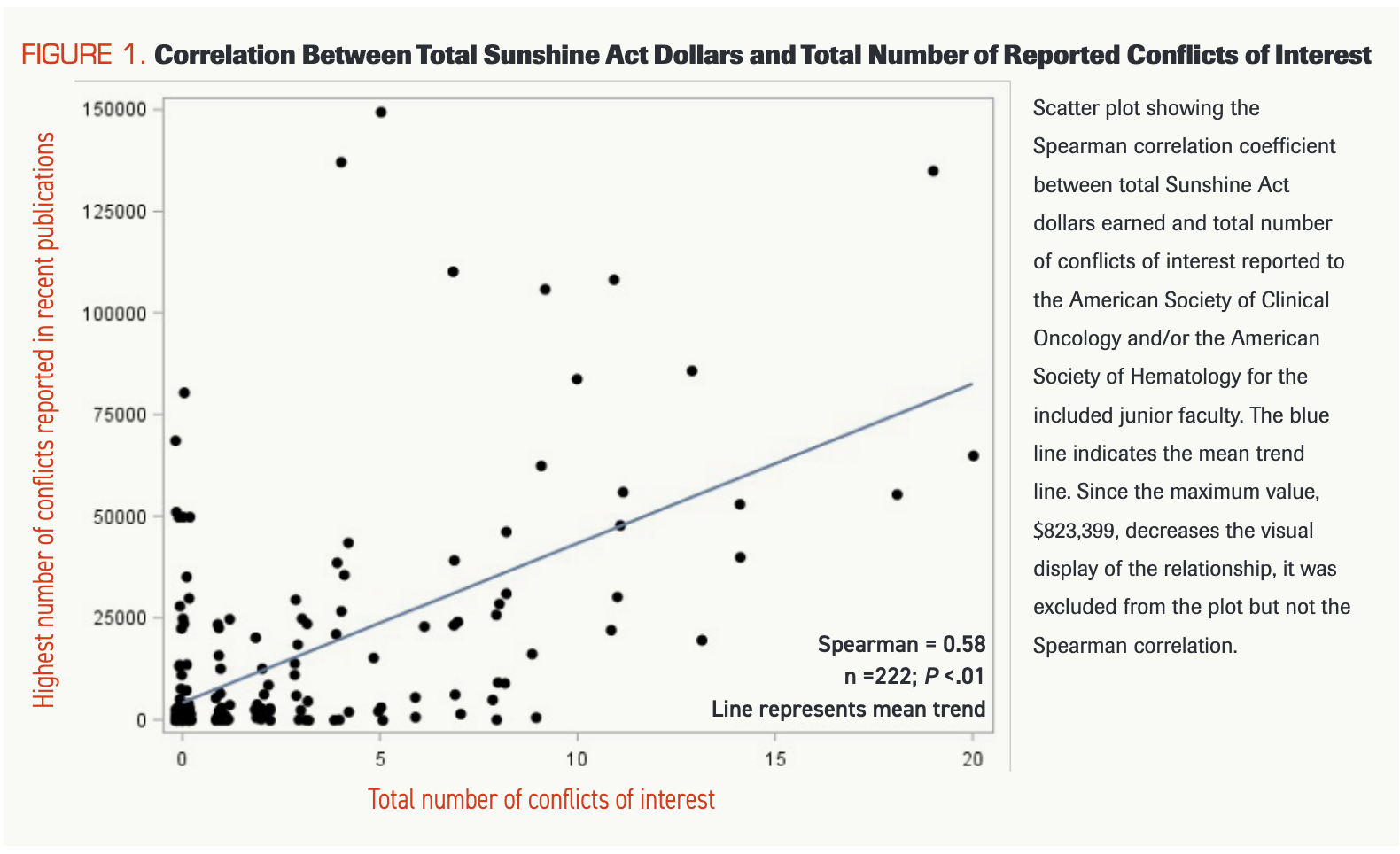
To illustrate the relationship between YSF and development of COIs, we divided the sample into 4 categories based on timeframe since completing fellowship, in increasing order of experience: 2017-2018 (n = 40; 17%); 2015-2016 (n = 49; 21%); 2013-2014 (n = 67; 29%); and 2004-2012 (n = 74; 32%). The total number of COIs and Sunshine Act dollars obtained from industry increased as YSF increased (Figures 2A and 2B). For new junior faculty who completed fellowship in 2017 or 2018, the median number of COIs was 0 (range, 0-3) and the median number of Sunshine Act dollars was $173 (range, $0-$23,547). Only 2 individuals of the 40 in this group (5%) received more than $10,000 in Sunshine Act dollars. In contrast, 35 of 74 faculty (47%) who completed fellowship between 2004 and 2012 received more than $10,000 in Sunshine Act funds and 7 of the 74 in this group (9%) received more than $100,000 (Figure 3).
FIGURE 2A. Relationships Between H-Index and Number of Conflicts of Interest Stratified by Years Since Completing Fellowship
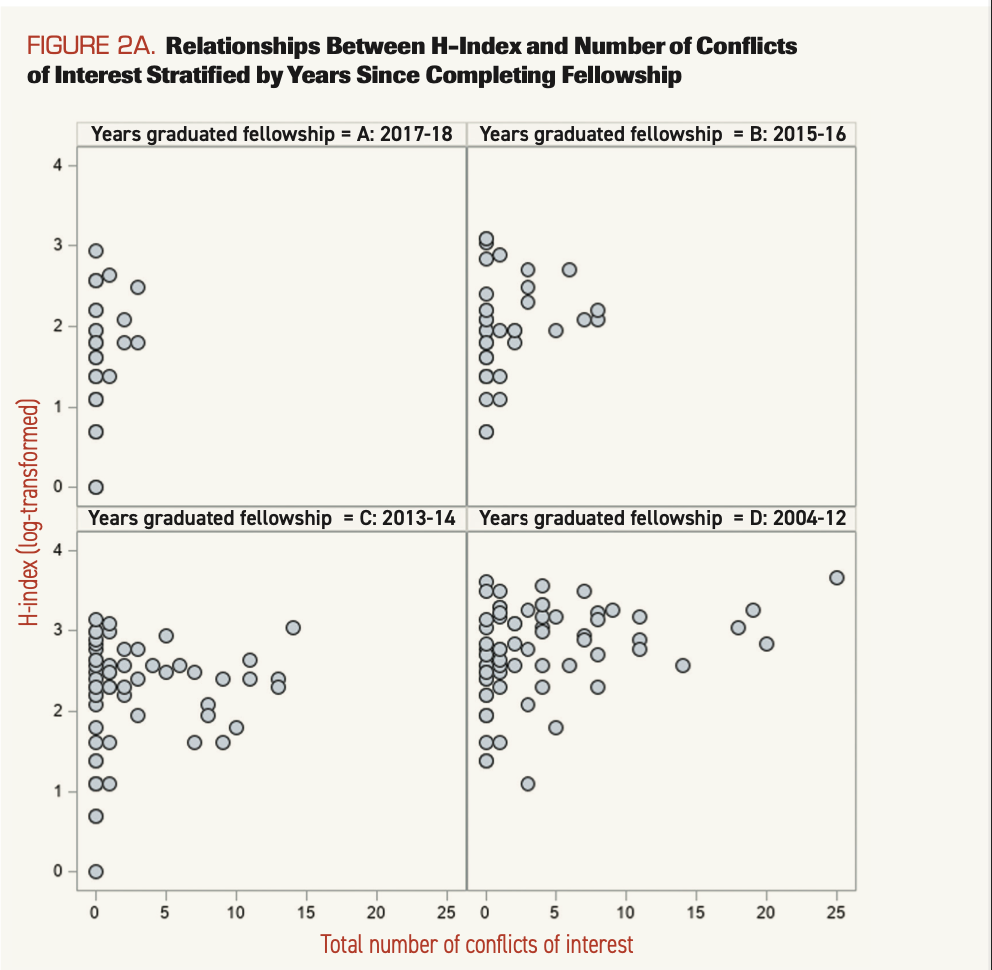
FIGURE 2B. Relationships Between H-Index and Sunshine Act Dollars Stratified by Years Since Completing Fellowship
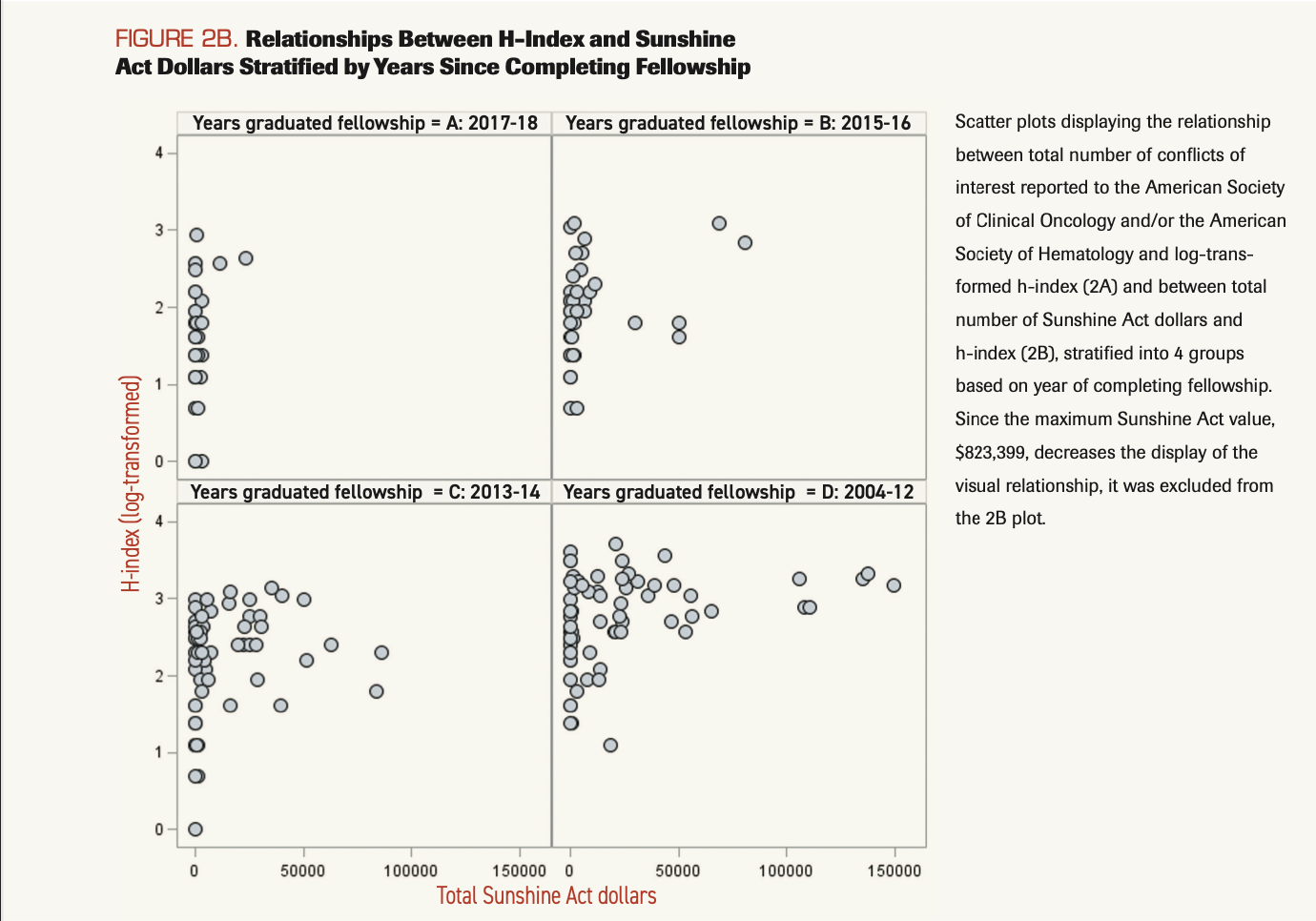
FIGURE 3. Sunshine Act Dollars Received By Faculty Categorized By Years Since Completing Fellowship
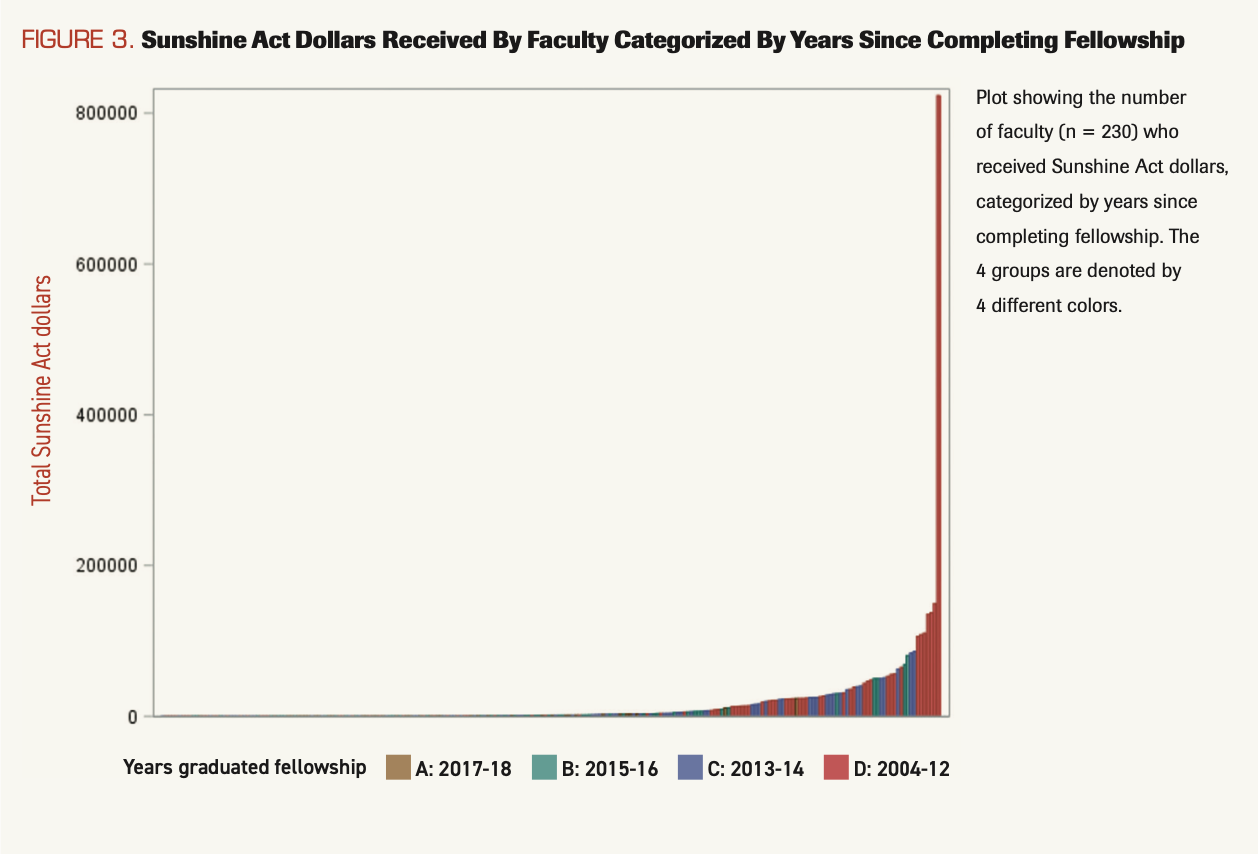
COIs and dollars obtained from industry correlated with h-index (Spearman correlation coefficient, 0.41 and 0.37, respectively; both P <.01). Multivariate analysis demonstrated that in addition to a positive association between YSF and the outcome log-transformed h-index (P <.01), there was an independent positive relationship with Sunshine Act dollars (P <.01). Similarly, there was a positive relationship between log-transformed h-index and COIs (P = .01), adjusting for YSF (P <.01). Figure 2 visually displays the relationship between the log-transformed h-index outcome with COIs (2A) or industry dollars (2B), stratified by YSF.
Total number of publications was also related to COIs and dollars obtained from industry (Spearman correlation coefficient, 0.45 and 0.44, respectively; both P <.01). No clear differences existed between junior faculty with or without NIH funding regarding the impact of COI on outcome measures. In each of the 2 multivariate linear regression models (with log-transformed number of publications as the outcome), COIs (P = .01) and industry dollars
(P <.01) were significant, adjusted for YSF (P <.01 for both models).
Discussion
Financial COIs and relationships with industry were common among junior faculty in hematology and oncology at top academic centers. Our study findings confirmed our primary hypothesis that financial relationships with
industry were correlated with traditional markers of early career success, independent of YSF. The direction of this relationship—specifically, whether payments drive success, or whether industry representatives identify promising and productive junior faculty and then provide greater financial support to them—could not be distinguished. As there are many factors that drive early career success, no causal association in our analyses could be established.
Our study demonstrated several other key findings with important implications. First, the number of self-reported COIs was directly correlated with Sunshine Act dollars; this serves as a surrogate for industry relationships. These measures were independent markers of academic success in multivariate analysis. Second, while the interaction between COIs and YSF was not significant, there appeared to be a relationship, as shown in Figure 2A. Interestingly, both individuals with and without NIH funding received payments from industry and reported potential COIs. Third, financial COIs accumulated over time in terms of Sunshine Act dollars received from industry and number of reported COIs. Fourth, interactions with industry were highly variable across individuals. While the median number of reported COIs was low at 0, the range of 0 to 20 was broad. Similarly, the median number of Sunshine Act dollars was relatively low at $1366, but there was a broad range of $0 to $149,558, with an outlier of $823,399. Further, while there was relatively good correlation between COIs reported to ASCO/ASH and in recent publications, there was variability among individuals. This may exist because ASCO and ASH COI reporting guidelines encourage faculty to disclose all potential COIs more broadly, while journal disclosure guidelines may be less clear and not standardized. These data, combined with results of prior studies, emphasize the critical need for standardized guidelines for reporting of COIs across publications and professional societies.10,11
Across all disciplines, and in oncology in particular, traditional funding sources from the government are fiercely competitive, with NIH grant success rates at or below 20%.8 Even for some of the elite cancer centers in the United States, NIH grants had been given to only 15% of junior faculty members included in the study. Given the scarcity of academic resources, coupled with pressure to produce scientific output to be eligible for promotion, many hematology and oncology faculty rely on interactions with pharmaceutical and/or biotechnology companies to help fund clinical trials or correlative studies. In fact, from 2006 to 2014, NIH-funded clinical trials decreased by 24%, while industry-funded trials increased by 43%.6 As a result, industry has become the dominant source for biomedical research funding in the United States.12 Furthermore, many therapeutic trials led by the National Cancer Institute include funding from pharmaceutical companies. For physicians, the mechanisms for obtaining this funding are less formalized compared with traditional grant applications, but they are likely to be facilitated by greater overall interaction with the private sector. Junior faculty may use this “non–grant-based” funding mechanism to help advance their careers as physician-scientists or clinical investigators. However, the exact mechanisms and potential causations for how this may occur were not explicitly tested in our analyses.
Limitations and Strengths
This study is the first to specifically evaluate the relationship between early-career interactions with industry and how these may correlate with career success for junior faculty in academic hematology and oncology. There are several limitations to our work. First, measures of academic success tend to increase over time. Therefore, while COIs correlated with academic success in our results, increasing experience and time remained a confounding factor and thus no causal relationship between COIs and academic success could be established. Given the cross-sectional nature of the analysis, the ability to characterize promotion to associate professor or departure to other career trajectories (eg, private practice) could not be addressed, as these decisions depend on multiple factors. Second, Sunshine Act dollars are not a direct reflection of research funding (because many payments are for travel or speaking engagements) and may only serve as an indicator of industry interactions. In addition, these dollars may not fully reflect payments received from biotechnology firms, medical device companies, and businesses outside of the United States. Recent data have also reported significant discordance between self-reported and industry-related COIs, which indicates some degree of inaccuracy in these measures. In addition, guidelines associated with reporting of COIs to ASCO and ASH have changed over time, and there are some differences between how each society reports COIs.5 However, we attempted to limit this reporting bias by obtaining the COI information from multiple sources, including professional society websites and recent publications. Third, other sources of funding, including institutional grants or foundation grants, were not captured in our data, and these funding sources may also contribute to junior faculty career success.
Conclusions
The aim of our analysis was to evaluate the prevalence and associations of COIs over time in junior faculty in hematology and oncology in a representative sample of academic medical centers. We found that COIs and industry payments accumulated over time after faculty members completed fellowship training. Furthermore, interactions with industry correlated with measures of academic success (ie, h-index and number of publications). These data suggest that early academic success may be linked to funding, either obtained from industry or traditional government-based grant sources, but whether industry payments alone drive career success could not be established. In addition, there is an ongoing need to harmonize the reporting of COIs across meeting and publication platforms.
AUTHOR AFFILIATIONS:
Suneel D. Kamath, MD1; Angela J. Fought, MS2; Melissa M. Shaw, MD3; and Andrew A. Davis, MD4
1. Cleveland Clinic Taussig Cancer Institute, Cleveland, OH.
2. Center for Innovative Design & Analysis, Department of Biostatistics and Informatics, University of Colorado, Aurora, CO.
3. Feinberg School of Medicine, Northwestern University, Chicago, IL.
4. Washington University in St Louis School of Medicine, St Louis, MO.
Corresponding author:
Suneel D. Kamath, MD, Associate Staff, Cleveland Clinic Taussig Cancer Institute, 9500 Euclid Ave, CA50, Cleveland, OH 44195; 216-314-4531; kamaths@ccf.org
Acknowledgments: There was no funding for this study.
Prior presentation: This work was previously presented at the 2020 American Society of Clinical Oncology Annual Meeting.
Potential conflicts of interest: SDK has served as a consultant/advisory role for Exelixis, Tempus, and OncLive. He also has received funding for travel, accommodations, and expenses from the following: AstraZeneca, Bristol Myers Squibb, Merck, Foundation Medicine, Guardant Health, Ipsen, and Janssen. AJF has served as a consultant and received research funding from iRhythm Technologies. MMS has no COIs. AAD has had travel expenses paid by Menarini Silicon Biosystems.
Contributions: AAD and SDK designed the study. AAD, MMS, and SDK generated the data. AAD, AJF, and SDK analyzed the data. SDK and AAD wrote the first draft of the manuscript. All authors approved the manuscript.
References
- Hayes MJ, Prasad V. Financial conflicts of interest at FDA Drug Advisory Committee meetings. Hastings Cent Rep. 2018;48(2):10-13. doi:10.1002/hast.833
- Mitchell AP, Basch EM, Dusetzina SB. Financial relationships with industry among National Comprehensive Cancer Network guideline authors. JAMA Oncol. 2016;2(12):1628-1631. doi:10.1001/jamaoncol.2016.2710
- Okike K, Kocher MS, Wei EX, Mehlman CT, Bhandari M. Accuracy of conflict-of-interest disclosures reported by physicians. N Engl J Med. 2009;361(15):1466-1474. doi:10.1056/NEJMsa0807160
- Weiss GJ, Davis RB. Discordant financial conflicts of interest disclosures between clinical trial conference abstract and subsequent publication. PeerJ. 2019;7:e6423. doi:10.7717/peerj.6423
- Garrett-Mayer E, Kaltenbaugh MW, Spence R, et al. Discrepancies in financial self-disclosures and open payments reporting among authors of clinical oncology research studies. J Clin Oncol. 2020;38(5):480-487. doi:10.1200/JCO.19.02467
- Ehrhardt S, Appel LJ, Meinert CL. Trends in National Institutes of Health funding for clinical trials registered in ClinicalTrials.gov. JAMA. 2015;314(23):2566-2567. doi:10.1001/jama.2015.12206
- Stossel TP. Regulating academic-industrial research relationships--solving problems or stifling progress? N Engl J Med. 2005;353(10):1060-1065. doi:10.1056/NEJMsb051758
- Rockey S. What are the chances of getting funded? National Institutes of Health / Office of Extramural Research. June 29, 2015. Accessed November 1, 2019. https://bit.ly/3Hylqxu
- Kaestner V, Edmiston JB, Prasad V. The relation between publication rate and financial conflict of interest among physician authors of high-impact oncology publications: an observational study. CMAJ Open. 2018;6(1):E57-E62. doi10.9778/cmajo.20170095
- Bauchner H, Fontanarosa PB, Flanagin A. Conflicts of interests, authors, and journals: new challenges for a persistent problem. JAMA. 2018;320(22):2315-2318. doi:10.1001/jama.2018.17593
- Dunn AG, Coiera E, Mandl KD, Bourgeois FT. Conflict of interest disclosure in biomedical research: a review of current practices, biases, and the role of public registries in improving transparency. Res Integr Peer Rev. 2016;1:1. doi:10.1186/s41073-016-0006-7
- Dorsey ER, de Roulet J, Thompson JP, et al. Funding of US biomedical research, 2003-2008. JAMA. 2010;303(2):137-143. doi:10.1001/jama.2009.1987
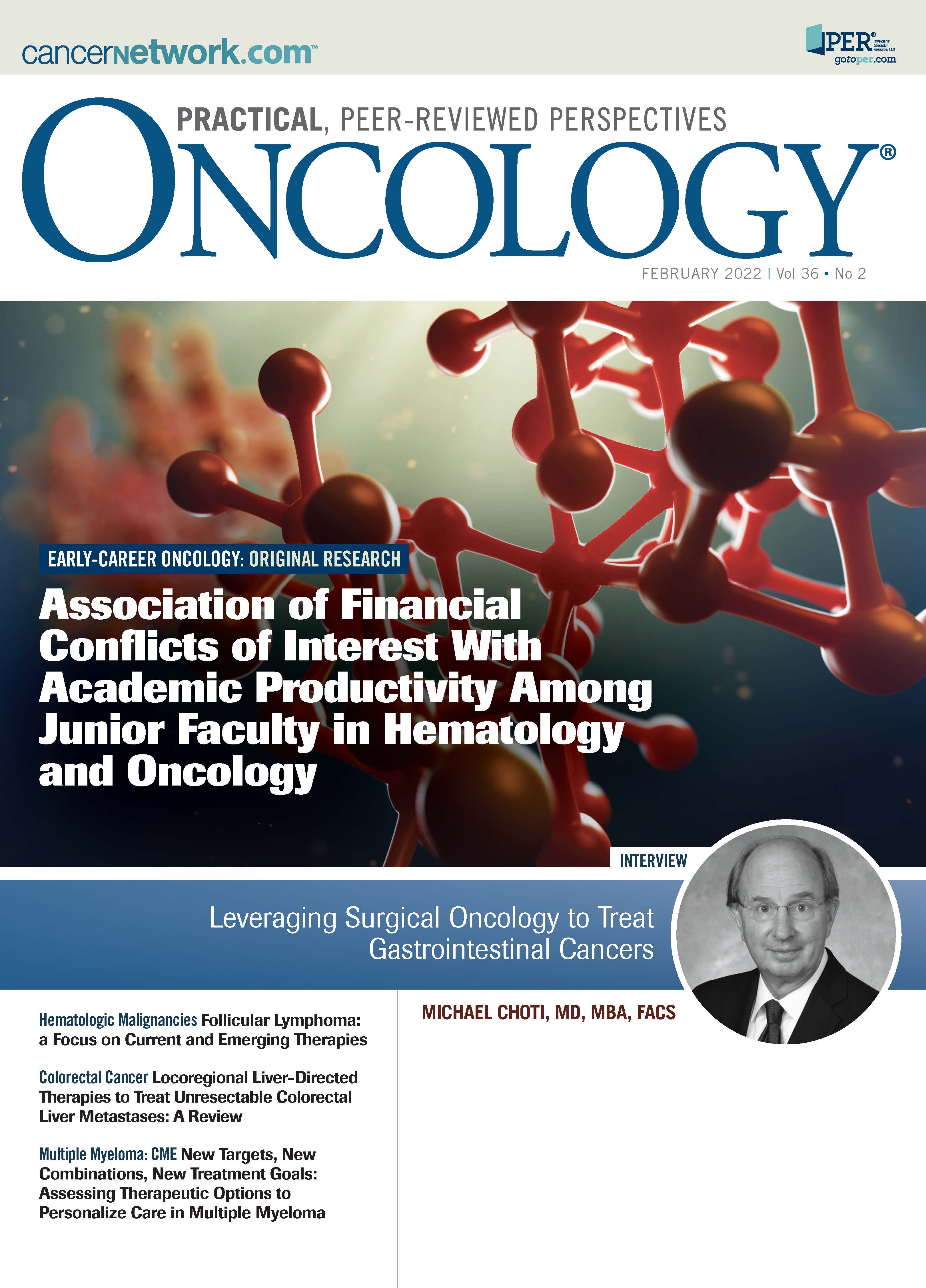
Newsletter
Stay up to date on recent advances in the multidisciplinary approach to cancer.
Elevating the Quality of Cancer Care via Cross-Department Collaboration
Experts from Sibley Memorial Hospital discuss how multidisciplinary work has enhanced outcomes such as survival and resource use at their institution.